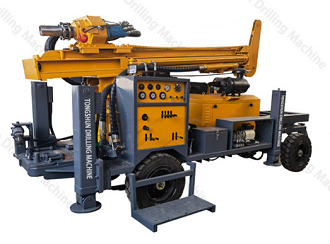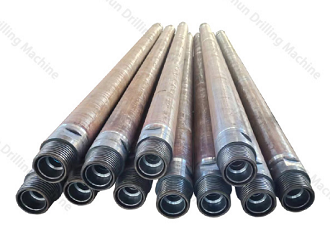In the dynamic world of rock drilling, two prominent techniques have emerged as frontrunners: Down-the-Hole (DTH) drilling and Top Hammer drilling. Each method boasts unique features and advantages, making them popular choices for various applications. This article explores the intricacies of both techniques, comparing their strengths, weaknesses, and ideal use cases. By the end, you'll gain a comprehensive understanding of whether DTH drilling or Top Hammer drilling is the superior choice for specific drilling endeavors.
Down-the-Hole (DTH) drilling is renowned for its exceptional penetration rates and efficiency, making it an ideal choice for deep-hole drilling. The DTH technique uses a pneumatic hammer to drive a drill bit down into the rock with percussive action, effectively chipping away at the formation. Key advantages of DTH drilling include:
1. Deep Drilling Capability: DTH drilling excels in deep-hole applications, providing precise and reliable drilling at significant depths.
2. Low Deviation: The straightness and accuracy of DTH drilling ensure minimal deviation, making it suitable for projects requiring high precision.
3. Versatility: DTH drilling is capable of handling various rock types, from soft to extremely hard formations, offering versatility across diverse geological conditions.
4. Reduced Hole Deviation: The direct attachment of the drilling rod to the bit provides guidance, minimizing hole deviation throughout the drilling process.
Top Hammer drilling uses a percussive mechanism mounted on the top of the drill string, making it efficient for surface drilling and smaller-scale projects. Key advantages of Top Hammer drilling include:
1. Speed and Efficiency: Top Hammer drilling excels in surface applications, delivering higher drilling speeds and efficiency for shallower holes.
2. Lower Equipment Cost: Compared to DTH drilling, Top Hammer equipment typically incurs lower initial costs, appealing to projects with budget constraints.
3. Ideal for Cohesive Formations: This method performs particularly well in cohesive rock formations, ensuring reliable drilling in such geological conditions.
4. Ease of Maintenance: The top-mounted hammer design simplifies maintenance, reducing downtime and enhancing overall productivity.
Selecting between DTH and Top Hammer drilling techniques depends on several factors:
1. Drilling Depth: For deep-hole projects requiring straightness and precision, DTH drilling is the superior choice.
2.Geological Conditions: The hardness and composition of the rock formation significantly impact drilling performance. DTH drilling's adaptability to varying rock types makes it a versatile option, while Top Hammer excels in cohesive formations.
3.Project Scale: Smaller-scale surface drilling projects often benefit from the speed and cost-effectiveness of Top Hammer drilling.
4. Budget and Investment: Companies should consider budgetary constraints and long-term investment plans when choosing between DTH and Top Hammer drilling equipment.
DTH drilling and Top Hammer drilling each have their niche in rock drilling. DTH's efficiency in deep-hole drilling and versatility across various geological conditions make it the preferred choice for demanding projects. In contrast, Top Hammer drilling's speed, cost-effectiveness, and suitability for cohesive formations make it a viable option for specific surface drilling applications. By understanding these techniques and evaluating project requirements, drilling professionals can optimize performance and achieve exceptional results in their rock drilling endeavors.


Copyright © Jinzhou City TongShun Drilling Machine Co.,Ltd. All Rights Reserved Sitemap | Powered by 